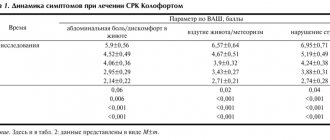Grammidin
Grammidin (active ingredient - gramicidin C) is a polypeptide antibiotic that has a pronounced antibacterial effect and is used in otolaryngological and dental practice for the treatment of infectious and inflammatory diseases of the throat and oral cavity. The nature of the course of acute respiratory infections is largely determined by the timeliness of therapeutic measures. Early initiation of treatment (i.e., at the first appearance of characteristic symptoms) prevents the development of complications and chronicization of the pathological process. All of us, figuratively speaking, with mother's milk, absorb methods and family traditions in treating colds: drinking plenty of fluids (more than 2 liters of liquid daily), gentle food (to prevent irritation of the mucous membrane of the oropharynx), lying down, giving up cigarettes, etc. . At the same time, for some reason, the elimination of fever is put at the forefront, which, however, is quite understandable: high body temperature, aching limbs are not the most pleasant sensations. Trying to return to the previous state of complete physiological comfort as soon as possible, the patient immediately turns to his home medicine cabinet to take good old paracetamol or ibuclin. These, as well as other non-steroidal anti-inflammatory drugs, are likely to help reduce the temperature, but they will only act on the symptoms of the disease, and not on its cause. Many people mistakenly believe that colds develop due to hypothermia. However, this is only the first prerequisite, an impetus that provides favorable conditions for the growth and reproduction of pathogenic microorganisms on the mucous membranes of the upper respiratory tract. As a result, acute infectious and inflammatory processes such as tonsillitis, pharyngitis or tracheitis develop. And here it is unlikely that it will be possible to do without antibacterial therapy. A common mistake in such cases is the desire to resort to the most powerful antibiotics of the latest generations in order to “strangle” the infectious focus in the bud. However, such “heavy artillery” can only be thrown into battle on the orders of the “commander”, i.e. in this case, a doctor. For acute respiratory diseases, systemic antibiotic therapy is required in less than 10% of cases.
However, in reality, systemic antibacterial drugs are used several times more often. Due to inadequate and uncontrolled treatment with antibiotics, strains of microorganisms resistant to antibacterial drugs have become widespread, which greatly complicates treatment. The prescription of systemic antibiotic therapy for acute respiratory infections is not always justified. Currently, clinicians have local antimicrobial drugs with a wide spectrum of antibacterial activity in their arsenal, which in the vast majority of cases will be a reasonable alternative to thoughtless self-medication with systemic antibiotics. One of these medicines is the original domestic drug grammidin, produced in lozenges. The antibiotic gramicidin C, which is part of it, saved many lives during the Great Patriotic War, after which it was gradually replaced by more modern drugs, but Russian pharmacologists again decided to resort to its help and, as practice has shown, it is absolutely justified. Grammidin has many advantages. It has a powerful bactericidal effect against gram-positive and gram-negative microorganisms, which most often cause infectious and inflammatory diseases of the oropharynx and hypopharynx. It also has some antiviral and antimycotic activity. The mechanism of action of grammidin is associated with its ability to increase the permeability of the cytoplasmic membrane of the bacterial cell, causing the release of intracellular contents to the outside. Another undeniable advantage of grammidin is the absence of bacterial strains resistant to it. And finally, one cannot fail to note the safety of the drug when applied topically, because the active substance practically does not penetrate into the systemic circulation. The latter is especially important because it allows you to avoid the negative effects of the drug on internal organs, blood count, central nervous system and intestinal microflora. Grammidin tablets do not have an irritating effect and do not cause allergic reactions, which allows us to recommend the drug for the widest use during seasonal exacerbations of acute respiratory viral infections and other colds.
Grammidin Neo
Grammidin Neo is a combined two-component drug for local use in dental practice. The therapeutic effect of a drug consists of the pharmacological effects of its active substances. Gramicidin C is an antibacterial agent. Increases the permeability of the plasmalemma of the microbial cell, which disrupts its stability and causes lysis. Pathogens of oropharyngeal infections exhibit sensitivity to the drug. Cetylpyridinium chloride is a disinfectant. Inhibits the growth and reproduction of representatives of pathogenic and facultative pathogenic microflora of the oropharynx. The drug eliminates inflammation and discomfort in the throat, facilitates the transfer of a bolus of food from the pharynx to the esophagus, causes increased salivation, which contributes to abundant wetting of the oropharyngeal mucosa and its cleansing of bacteria. Both active ingredients act locally and are not absorbed from the digestive tract, which minimizes the risk of systemic side effects. Grammidin Neo is used for acute inflammation of the components of the lymphatic pharyngeal ring, the mucous membrane of the pharynx, deep damage to the periodontal tissue, inflammation of the gums without compromising the integrity of the dentogingival junction, inflammation of the mucous epithelium lining the oral cavity. The frequency of use of the drug is from 1 to 4 times a day, depending on the clinical situation and the individual characteristics of the patient. After resorption of the drug or treatment of the oral cavity with it, it is necessary to avoid food intake, incl. fluid intake within 1-2 hours. In rare cases, allergic reactions develop after taking the drug. In pediatric practice, Grammidin Neo is used starting from the age of 4 years. If there is no apparent therapeutic response after seven days of using the drug, you should consult your doctor. The drug potentiates the effects of other local antibacterial agents. Grammidin Neo is an improved version of Grammidin, which contains twice the dose of the topical antibiotic gramicidin C, so that one package of the drug is now enough for the course of treatment.
Gramicidin C is an original antibiotic isolated by Soviet scientists from the culture of Bacillus brevis. It has a number of advantages, the key of which is a pronounced bactericidal effect against representatives of gram-positive and gram-negative microflora, which most often cause infections of the oropharynx. In addition to antibacterial, this antibiotic has antimycotic and antiviral activity. It shows its effect incl. if the patient has a purulent plaque, which makes the effect of most antiseptics ineffective. Cetylpyridine chloride potentiates the effects of gramicidin C, inhibiting the growth and development of bacteria and viruses. One of the most pressing health problems is antibiotic resistance, which makes general antibiotic therapy ineffective for acute infections of the upper respiratory tract. An acceptable alternative in this case may be the prescription of local antibacterial drugs with a wide therapeutic range, one of which is Grammidin Neo. In nature today there are practically no bacterial strains that would be resistant to gramicidin C. The reason for this lies in the polypeptide structure of this antibiotic, which causes a minimal risk of the emergence of microorganisms resistant to it. The spectrum of antimicrobial activity of the drug extends to most infections of the oropharynx. At the same time, the drug does not cause direct or cross-resistance of bacteria to it, which makes it possible to use the drug in long courses with the possibility of repeating them without the risk of weakening its effect. The absence of systemic side effects allows the drug to be used in children and elderly patients, as well as people with comorbidities. Grammidin Neo can be used both as monotherapy and as an additional agent in systemic antibiotic therapy.
Grammidin Neo with anesthetic, 18 lozenges
Registration Certificate Holder
VALENTA PHARM (Russia)
Dosage form
Medicine - Grammidin® with anesthetic neo (Grammidin with anesthetic neo)
Description
Lozenges
white, round, biconvex, with the inscription "GR" on one side.
1 tab.
gramicidin C dihydrochloride 3.2 mg, which corresponds to the content of gramicidin 3 mg oxybuprocaine hydrochloride 0.2 mg cetylpyridinium chloride monohydrate 1.05 mg, which corresponds to the content of cetylpyridinium chloride 1 mg
Excipients
: colloidal silicon dioxide - 5 mg, talc - 60 mg, acesulfame potassium - 15 mg, mint flavor - 25 mg, sorbitol - 1065.55 mg, magnesium stearate - 25 mg.
6 pcs. — contour cell packaging (2) — cardboard packs. 6 pcs. — cellular contour packages (3) — cardboard packs. 6 pcs. — contour cell packaging (4) — cardboard packs. 9 pcs. — contour cell packaging (2) — cardboard packs.
Indications
Infectious and inflammatory diseases of the oral cavity and pharynx: sore throat; pharyngitis; tonsillitis; periodontal disease; gingivitis; stomatitis.
Contraindications for use
I trimester of pregnancy; children under 4 years of age; hypersensitivity to the components of the combination.
pharmachologic effect
Combined drug for the treatment of infectious and inflammatory diseases of the pharynx and oral cavity. The drug contains the antimicrobial agent gramicidin C, the local anesthetic agent oxybuprocaine and the antiseptic agent cetylpyridinium chloride.
The mechanism of action of gramicidin C is associated with an increase in the permeability of the cytoplasmic membrane of the microbial cell, which disrupts its stability and causes cell death.
Gramicidin C has a pronounced antimicrobial effect against pathogens of infectious diseases of the oral cavity and pharynx.
The anesthetic oxybuprocaine has a local anesthetic effect on the mucous membrane of the oral cavity and pharynx. Causes a reversible blockade of the propagation and conduction of nerve impulses through the axons of nerve cells.
Cetylpyridinium chloride is an antiseptic. Suppresses the growth and reproduction of pathogens of infectious diseases of the oral cavity.
The drug has an analgesic effect, reduces inflammation, has an antimicrobial effect, softens discomfort in the throat, facilitates swallowing, and when absorbed causes hypersalivation, which contributes to the mechanical cleansing of the oral cavity and pharynx from microorganisms.
Drug interactions
When taken together, it increases the effectiveness of other antimicrobial agents of local and systemic action.
Dosage regimen
For resorption.
Use after meals 1-4 times a day, depending on age.
Side effect
In some cases:
allergic reactions, temporary loss of sensitivity of the tongue.
special instructions
If there is no therapeutic effect within 7 days, the patient should consult a doctor.
Use during pregnancy and breastfeeding
Restrictions during pregnancy - Contraindicated. Restrictions when breastfeeding - Contraindicated.
Not recommended for use in the first trimester of pregnancy.
Breastfeeding should be stopped during use.
Use in children
Restrictions for children - With caution. Contraindication: children under 4 years of age.


